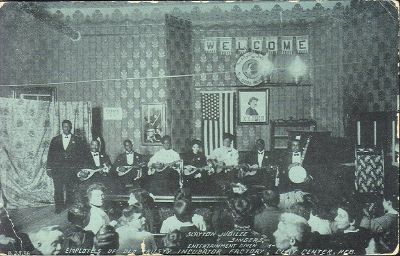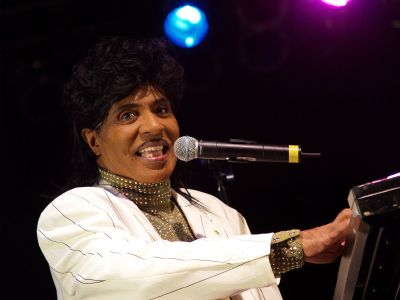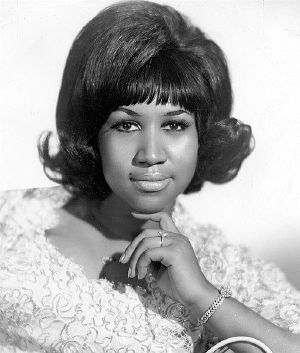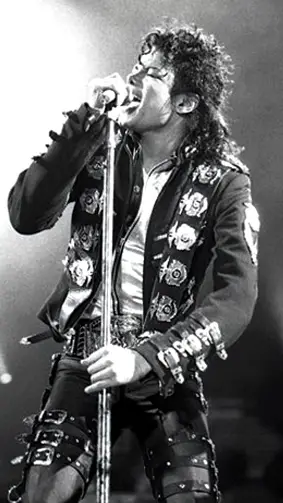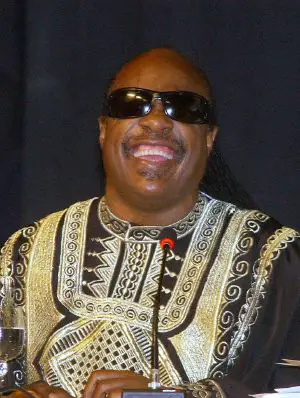African American music
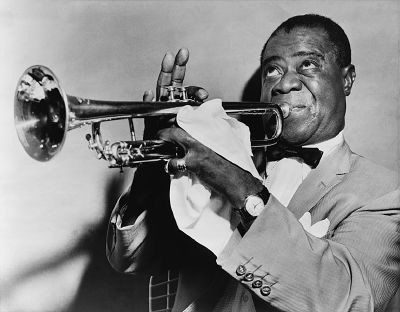
African American music is an umbrella term given to a range of music and musical genres emerging from or influenced by the culture of African Americans, who have long constituted a large ethnic minority of the population of the United States. They were originally brought to North America to work as enslaved peoples, bringing with them typically polyrhythmic songs from hundreds of ethnic groups across West and sub-Saharan Africa. In the United States, multiple cultural traditions merged with influences from polka, waltzes and other European music. Later periods saw considerable innovation and change.
African American genres are the most important ethnic vernacular tradition in America as they have developed independent of African traditions from which they arise more so than any other immigrant groups, including Europeans; make up the broadest and longest lasting range of styles in America; and have, historically, been more influential, interculturally, geographically, and economically, than other American vernacular traditions. African American music and all aspects of African American culture are celebrated during Black History Month in February of each year in the United States.
Historic Traits
Features common to most African American music styles include:
- call and response
- vocality (or special vocal effects): guttural effects, interpolated vocality, falsetto, Afro-melismas, lyric improvisation, vocal rhythmization
- blue notes
- rhythm: syncopation, concrescence, tension, improvisation, percussion,swung note
- texture: antiphony, homophony, polyphony, heterophony
- harmony: vernacular progressions; complex multi-part harmony, as in spirituals and barbershop music
(Stewart 1998: 5-15)
History
Nineteenth century
The influence of African Americans on mainstream American music began in the nineteenth century, with the advent of blackface minstrelsy. The banjo, of African-American origin, became a popular instrument, and African-derived rhythms were incorporated into popular songs by Stephen Foster and other songwriters. In the 1830s, the Great Awakening led to a rise in Christian fundamentalism, especially among African Americans. Drawing on traditional work songs, African American slaves originated began performing a wide variety of Spirituals and other Christian music. Many of these songs were coded messages of subversion against slaveholders, or which signalled escape.
During the period after the Civil War, the spread of African American music continued. The Fisk University Jubilee Singers toured first in 1871. Artists including Morris Hill and Jack Delaney helped revolutionize post-war African music in the central East of the United States.In the following years, the Hampton Students and professional jubilee troops formed and toured. The first black musical-comedy troup, Hyers Sisters Comic Opera Co, was organized in 1876. (Southern 221)
By the end of the nineteenth century, African American music was an integral part of mainstream American culture. Ragtime performers like Scott Joplin became popular and some soon became associated with the Harlem Renaissance and early civil rights activists.
Early twentieth century
The early part of the twentieth century saw a constant rise in popularity of African American blues and jazz. As well as the developments in the fields of visual arts, the Harlem Renaissance of the early twentieth century lead to developments in music .
White and Latino performers of both genres existed, and there had always been cross-cultural communication between the United States' races. Jewish klezmer music, for example, was a noted influence on jazz, while Jelly Roll Morton famously explained that a "Latin tinge" was a necessary component of good music. African American music was often simplified for white audiences, who would not have as readily accepted black performers, leading to genres like swing music, a pop-based outgrowth of jazz.
On the stage, the first musicals written and produced by African Americans to appear on Broadway debuted in 1898 with A Trip to Coontown by Bob Cole and Billy Johnson. In 1901, the first known recorded of black musicians was that of Bert Williams and George Walker; this set featured music from broadway musicals. The first black opera was performed in 1911 with Scott Joplin's Treemonisha. The following year, the first in a series of annual black symphony orchestra concerts were performed at Carnegie Hall. (Southern 221, 222)
The return of the black musical to broadway occurred in 1921 with Sissle and Blake's Shuffle Along. In 1927, a concert survey of black music was performed at Carnegie Hall including jazz, spirituals and the symphonic music of W.C. Handy's Orchestra and Jubilee singers. The first major film musical with a black cast was King Vidor's Hallelujah of 1929 . The first symphony by a black composer to be performed by a major orchestra was William Grant Still's Afro-American Symphony with the New York Philharmonic. African American performers were featured in operas such as Porgy and Bess and Virgil Thompson's Four Saints in Three Acts of 1934. Also in 1934 William Dawson's Negro Folk Symphony became the second African American composer's work to receive attention by a major orchestra with its performance by the Philadelphia Orchestra. (Southern 361)
Mid-twentieth century
By the 1940s, cover versions of African American songs were commonplace, and frequently topped the charts, while the original musicians found little success. Popular African American music at the time was a developing genre called "rock and roll," whose exponents included Little Richard and Jackie Brenston. The following decade saw the first major crossover acts, with Bill Haley and Elvis Presley performing rockabilly, a rock and country fusion, while black artists like Chuck Berry and Bo Diddley received unprecedented mainstream success. Presley went on to become perhaps the first watershed figure in American music; his career, while never extremely innovative, marked the beginning of the acceptance of musical tastes crossing racial boundaries among all audiences. He was also the first in a long line of white performers to achieve what some perceive as undue fame for his influence, since many of his fans showed no desire to learn about the pioneers he learned from. The 1950s also saw doo wop become popular.
The late 1950s also saw vastly increased popularity of hard blues from the earliest part of the century, both in the United States and United Kingdom. A secularized form of American gospel music called soul also developed, with pioneers like Ben E. King and Sam Cooke leading the wave. Soul and R&B became a major influence on surf, as well as the chart-topping girl groups like The Angels and The Shangrilas, only some of whom were white. Black divas like Diana Ross & the Supremes and Aretha Franklin became 1960s "crossover" stars. In the UK, British blues became a gradually mainstream phenomenon, returning to the United States in the form of the British Invasion, a group of bands led by The Beatles who performed classic-style R&B, blues and pop with both traditional and modernized aspects.
The British Invasion knocked most other bands off the charts, with only a handful of groups, like The Mamas & the Papas from California, maintaining a pop career. Soul music, in two major highly-evolved forms, remained popular among blacks. Funk, usually said to have been invented by James Brown, incorporated influences from psychedelia and early heavy metal. Just as popular among blacks and with more crossover appeal, album-oriented soul revolutionized African American music with intelligent and philosophical lyrics, often with a socially aware tone. Marvin Gaye's What's Going On is perhaps the best-remembered of this field. Social awareness was also exhibited in the 1960s and early 1970s in Africa with a new style called afrobeat which consisted of Yoruba music, jazz, and funk.
The 1970s and 1980s
The 1970s saw one of the greatest decades of black bands concerning melodic music, unlike a much contemporary rap, with hip hop being the only roots to the melodic music of blacks of the 1970s. Album-oriented soul continued its popularity, while musicians like Smokey Robinson helped turn it into Quiet Storm music. Funk evolved into two strands, one a pop and soul fusion pioneered by Sly & the Family Stone, and the other a more experimental psychedelic and metal fusion led by George Clinton and his P-Funk ensemble.
Black musicians achieved generally little mainstream success, though African Americans had been instrumental in the invention of disco, and some artists, like Gloria Gaynor and Kool & the Gang, found crossover audiences. White listeners preferred country rock bands, singer-songwriters and, in some subcultures, heavy metal and punk rock.
The 1970s also saw, however, the invention of hip hop music. Jamaican immigrants like DJ Kool Herc and spoken word poets like Gil Scott-Heron are often cited as the major innovators in early hip hop. Beginning at block parties in The Bronx, hip hop music arose as one facet of a large subculture with rebellious and progressive elements. At block parties, disc jockeyss spun records, most typically funk, while MCs introduced tracks to the dancing audience. Over time, DJs began isolating and repeating the percussion breaks, producing a constant, eminently dance-able beats, which the MCs began improvising more complex introductions and, eventually, lyrics.
In the 1980s, black pop artists included Michael Jackson, Lionel Richie, Whitney Houston, and Prince, who sang a type of pop dance-soul that fed into New Jack Swing by the end of the decade. These artists are the most successful of the era. Hip hop spread across the country and diversified. Techno, Dance, Miami bass, Chicago Hip House, Los Angeles hardcore and DC Go Go developed during this period, with only Miami bass achieving mainstream success. But before long, Miami bass was relegated primarily to the Southeastern US, while Chicago hip house had made strong headways on college campuses and dance arenas (i.e., the warehouse sound, the rave). The DC go-go sound like Miami bass became essentially a regional sound that didn't muster much mass appeal. Chicago house sound had expanded into the Detroit music environment and mutated into more electronic and industrial sounds creating Detroit techno, acid, jungle. Mating these experimental, usually DJ oriented, sounds with the prevalence of the multiethnic New York City disco sound from the 1970s and 1980s created a brand of music that was most appreciated in the huge discoteques that are located in cities like Chicago, New York, Los Angeles, Detroit, Boston, etc. Eventually, European audiences embraced this kind of electronic dance music with more enthusiasm than their North American counterparts. These variable sounds let the listeners prioritize their exposure to new music and rhythms while enjoying a gigantic dancing experience.
At the latter half of the decade about 1986 rap took off into the mainstream with Run-D.M.C. Raising Hell and Beastie Boys Licensed To Ill which became the first rap album to enter No.1 Spot On the "Billboard 200." Both of these groups mixed rap and rock together which apealed to rock and rap audicences. Hip Hop took off from its roots and the golden age hip hop scene started. Hip Hop became popular in America until the 1990s when it became worldwide. The golden age scene would die out in the early 1990s when gangsta rap and g-funk took over.
The 1990s and 2000s
Contemporary R&B, as the post-disco version of soul music came to be known as, remained popular throughout the 1980s and 1990s. Male vocal groups in the style of soul groups such as The Temptations and The O'Jays were particularly popular, including New Edition, Boyz II Men, Jodeci, Blackstreet, and, later, Dru Hill and Jagged Edge. Girl groups, including TLC, Destiny's Child, and En Vogue, were also highly successful. Destiny's Child would go on to be the highest selling female vocal group of all time.
Singer-songwriters such as R. Kelly, Mariah Carey, Montell Jordan, D'Angelo, and Raphael Saadiq of Tony! Toni! Toné! were also significantly popular during the 1990s, and artists such as Mary J. Blige, Faith Evans and BLACKstreet popularized a fusion blend known as hip-hop soul. D'Angelo's Marvin Gaye/Stevie Wonder-inspired sound would lead to the development of neo soul, popularized in the late 1990s/early 2000s by artists such as Lauryn Hill, Erykah Badu, India.Arie, and Musiq.
By the 2000s, R&B had shifted towards an emphasis on solo artists, including Usher and Alicia Keys, although groups such as B2K and Destiny's Child continued to have success. The line between hip-hop and R&B became significantly blurred by producers such as Timbaland and Lil Jon, and artists such as Lauryn Hill, Nelly, and Andre 3000, who, with partner Big Boi, helped popularize Southern hip hop music as OutKast.
"Urban music" and "urban radio" are race-neutral terms which are synonymous with hip hop and R&B and the associated hip hop culture which originated in New York City. The term also reflects the fact that they are popular in urban areas, both within black population centers and among the general population (especially younger audiences).
Museum
In Nashville, Tennessee, the new Museum of African American Music, Art and Culture recognizes the rich contribution of African Americans to the musical tradition that is alive and well in the world today. Opened in January, 2021 as an educational center and tourist attraction, it reaches a wider audience, much like the music itself.
ReferencesISBN links support NWE through referral fees
- Burnim, Mellonee V., and Portia K. Maultsby. 2006. African American music: an introduction. NY: Routledge6. ISBN 0415941377
- Jones, Ferdinand and Arthur C. Jones. 2001. The triumph of the soul: cultural and psychological aspects of African American music. Westport, Conn: Praeger. ISBN 0275953653
- Southern, Eileen. 1997. The Music of Black Americans: A History. W. W. Norton & Company. ISBN 0393971414
- Stewart, Earl L. 1998. African American Music: An Introduction. NY: Schirmer Books; London: PrenticeHall International. ISBN 0028602943
External links
All links retrieved June 16, 2023.
- African-American Sheet Music Brown University Library Center for Digital Scholarship
- National Museum of African American Music
Credits
New World Encyclopedia writers and editors rewrote and completed the Wikipedia article in accordance with New World Encyclopedia standards. This article abides by terms of the Creative Commons CC-by-sa 3.0 License (CC-by-sa), which may be used and disseminated with proper attribution. Credit is due under the terms of this license that can reference both the New World Encyclopedia contributors and the selfless volunteer contributors of the Wikimedia Foundation. To cite this article click here for a list of acceptable citing formats.The history of earlier contributions by wikipedians is accessible to researchers here:
The history of this article since it was imported to New World Encyclopedia:
Note: Some restrictions may apply to use of individual images which are separately licensed.

